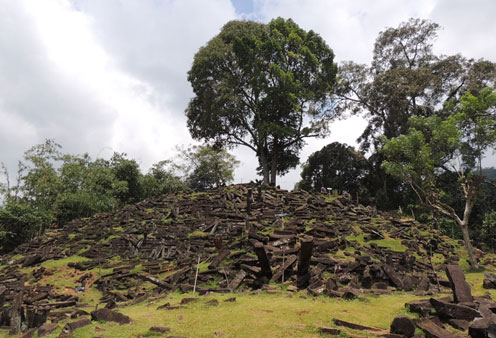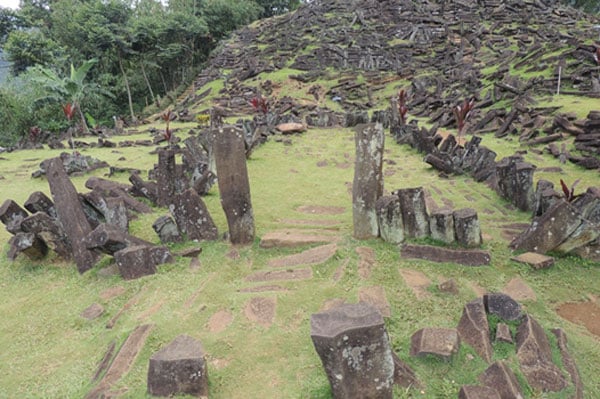Remarkable megalithic site of Gunung Padang must be preserved
Gunung Padang is a remarkable archaeological region located 120 kilometres south of Jakarta in Indonesia, known for having the largest number of megaliths in the country. It has been the subject of much controversy in recent years as archaeological research has suggested that one particular site, in Karyamuki village, is at least 9,000 years old, and possibly up to 20,000, which defies conventional perspectives regarding the history of Indonesia, and indeed the world. Now experts are calling on the government to do more to protect the ancient site, according to a report in the Jakarta Post.

Gunung Padang has the highest concentration of megaliths in the country. Credit: Alistair Coombs
According to several experts from the Gunung Padang independent and integrated research team (TTRM), the site could potentially be Indonesia’s oldest and most important prehistoric landmark and should be given priority in conservation efforts.
Last year, Danny Hilman, a senior geologist at Indonesia’s Centre for Geotechnical Research, conducted extensive surveys of the site, including geo-electric surveys, ground-penetrating radar, core samples, and analysis of stonework. Based on the results, he firmly believes that most of the 100-metre hill, upon which hundreds of megalithic stones are scattered, is actually man-made, built up on several stages over thousands of years by different cultures.
The megalithic stones are meticulously layered and arranged by columnar jointing, with each stone varying in size. The arrangement of the rocks and stones that are usually found upright have been laid horizontally on beds of gravel. Some are stuck together by an ancient form of glue and below the piles of stones is evidence of rooms, internal steps and terraces, all evidence of massive building, of human intelligence and planning.

Some stones were laid horizontally. Credit: Alistair Coombs
Indonesian Institute of Sciences (LIPI) researcher Danny Natawidjaja has called on further government support, including extra funding and the ceasing efforts to sell the location as a tourist destination.
Natawidjaja has pointed out that so-called ‘primitive man’ is believed not to have had the ability to build something as complex as Gunung Padang, so he insisted that there is a missing piece of the puzzle that deserves further research.
Architecture expert Pon Purajatmika added that the builders utilised an advanced knowledge system in the construction of the site. “Without the help of astronomy or knowledge about the surrounding area, the site could not have been built with such precision,” said Purajatmika, who explained that the site was constructed in orientation to the stars and the Sun.

Some aspects of Gunung Padang have been found to have astronomical alignments. Credit: Alistair Coombs
Despite initial opposition to claims that the whole hill is man-made, further research has come to confirm this finding and scientists have agreed to categorize the prismatic structure as a stepped pyramid that has an area of 3,094 square meters consisting of five levels. It stands more than 100 meters high and is believed to be the centre of a 25-hectare megalithic site.
Hilman realises the challenge he has ahead of him: “It's a strong case but not an easy case. We are up against the world's belief.''
Featured image: Gunung Padang. Credit: Alistair Coombs




















Comments
...so ancient giants taught us dominoes?